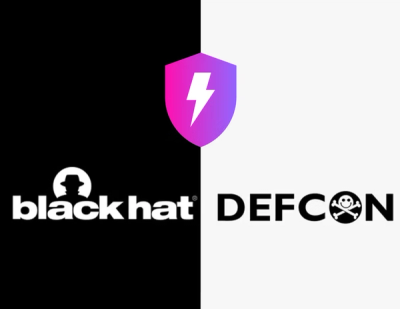
Security News
Meet Socket at Black Hat and DEF CON 2025 in Las Vegas
Meet Socket at Black Hat & DEF CON 2025 for 1:1s, insider security talks at Allegiant Stadium, and a private dinner with top minds in software supply chain security.
Simple but robust tool for interacting with the Google Drive and Sheets apis via python.
Autodrive is designed to make it as easy as possible to interact with the Google Drive and Sheets APIs via Python. It is especially designed to provide as much assistance as possible when writing code through hints and autocompletion, as well as via thorough type checking and hinting. These features are currently optimized for VSCode, which you can download here if you wish. They should also work in other Python IDEs.
Documentation: https://autodrive-py.readthedocs.io/en/latest/
Python 3.8+
Follow the steps outlined in the Prerequisites section
here.
Download and save the credentials.json file to the working directory you want to
use Autodrive in.
To test that your credentials provide the expected connection to your Google Drive
account, simply instantiate an Autodrive Drive instance:
from autodrive import Drive
drive = Drive()
If your credentials file was saved as credentials.json, your browser should
automatically open and prompt you to authorize the GCP project you created to
access your Google Drive. Click the various Allow prompts it will show you to
complete your first connection. After you see the browser switch to a page
indicating you can close the process, you should see a gdrive_token.json file
added to the working directory you saved your credentials.json file in. Next time
you use an Autodrive element that needs to connect to your Drive, this token will
be used and you will not be prompted to authorize access again until it expires.
The Drive class provides methods for finding and creating objects in your Google
Drive, such as Folders or Sheets.
gsheet = drive.create_gsheet("my-autodrive-gsheet")
If you use Drive to search for your Sheets and Folders, you don't need to supply the
GSheet or Folder IDs yourself, but if you know exactly what Sheet you want, then you
can directly instantiate a GSheet or folder by pulling the necessary info from the
object's url.
For example, if your Sheet's url looks like this:
docs.google.com/spreadsheets/d/19k5cT9Klw1CA8Sum-olP7C0JUo6_kMiOAKDEeHPiSr8/edit#gid=0
Simply copy/paste the id between /d/ and /edit# as the gsheet_id:
from autodrive import GSheet
gsheet = GSheet(gsheet_id="19k5cT9Klw1CA8Sum-olP7C0JUo6_kMiOAKDEeHPiSr8")
Tabs: Because Google calls spreadsheets "Sheets", and their api also refers to the individual sub-sheets in a spreadsheet as "Sheets", Autodrive instead refers to them as "Tabs" for clarity.
For a tab, you can get the tab_id from:
docs.google.com/spreadsheets/d/19k5cT9Klw1CA8Sum-olP7C0JUo6_kMiOAKDEeHPiSr8/edit#gid=234276686
from autodrive import Tab
tab = Tab(
gsheet_id="19k5cT9Klw1CA8Sum-olP7C0JUo6_kMiOAKDEeHPiSr8",
tab_title="Sheet2",
tab_idx=0,
tab_id=234276686
)
For a folder:
drive.google.com/drive/u/1/folders/1wLx-KMG2jO498xa5ZumB-SEpL-TwczZI
from autodrive import Folder
folder = Folder(folder_id="1wLx-KMG2jO498xa5ZumB-SEpL-TwczZI", name="Test Folder")
You can easily download and write data from a Google Sheet using the GSheet,
Tab, or Range views.
# Fetches all the data in all cells of the tab:
tab.get_data()
# Writes 8 cells (2 rows of 4 columns, starting in cell A1) to the tab:
tab.write_values(
[
[1, 2, 3, 4],
[5, 6, 7, 8],
]
)
GSheet and Range have very similar methods, and all of them allow you to read
and write data to only a specific range in the Google Sheet. See the
Documentation
for more.
FAQs
Simple but robust tool for interacting with the Google Drive and Sheets apis via python.
We found that autodrive demonstrated a healthy version release cadence and project activity because the last version was released less than a year ago. It has 1 open source maintainer collaborating on the project.
Did you know?

Socket for GitHub automatically highlights issues in each pull request and monitors the health of all your open source dependencies. Discover the contents of your packages and block harmful activity before you install or update your dependencies.

Security News
Meet Socket at Black Hat & DEF CON 2025 for 1:1s, insider security talks at Allegiant Stadium, and a private dinner with top minds in software supply chain security.

Security News
CAI is a new open source AI framework that automates penetration testing tasks like scanning and exploitation up to 3,600× faster than humans.

Security News
Deno 2.4 brings back bundling, improves dependency updates and telemetry, and makes the runtime more practical for real-world JavaScript projects.